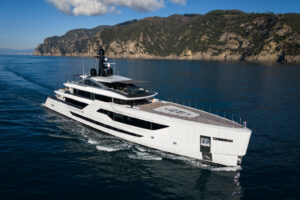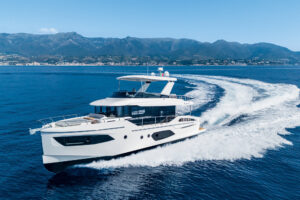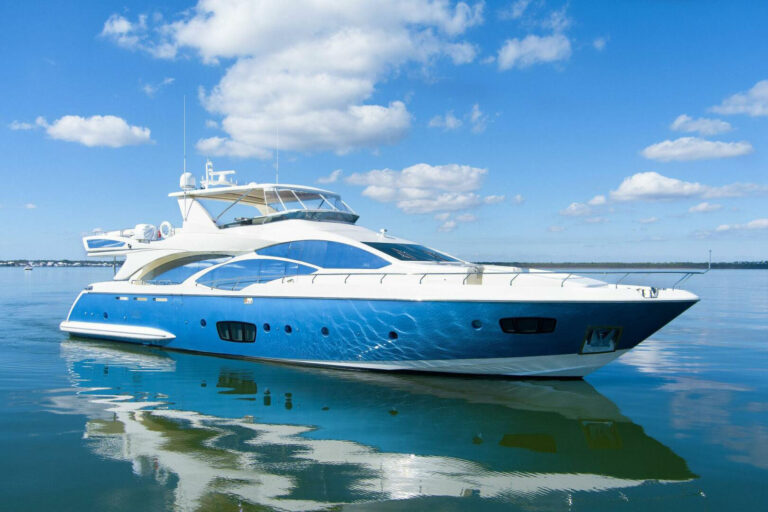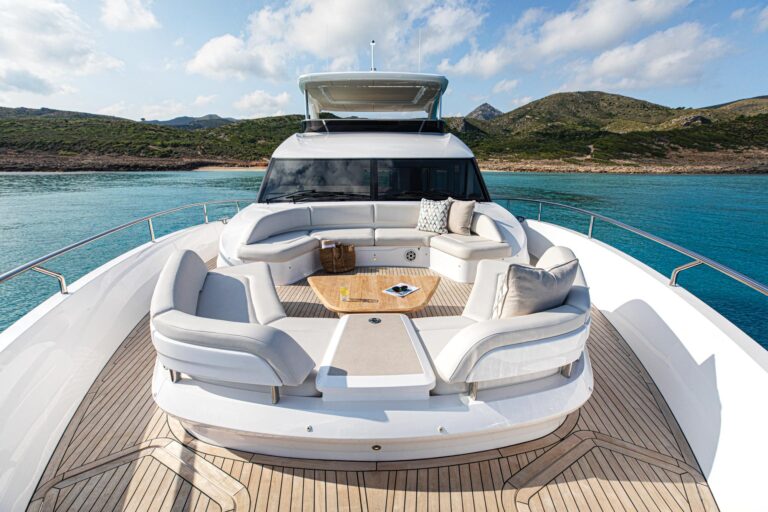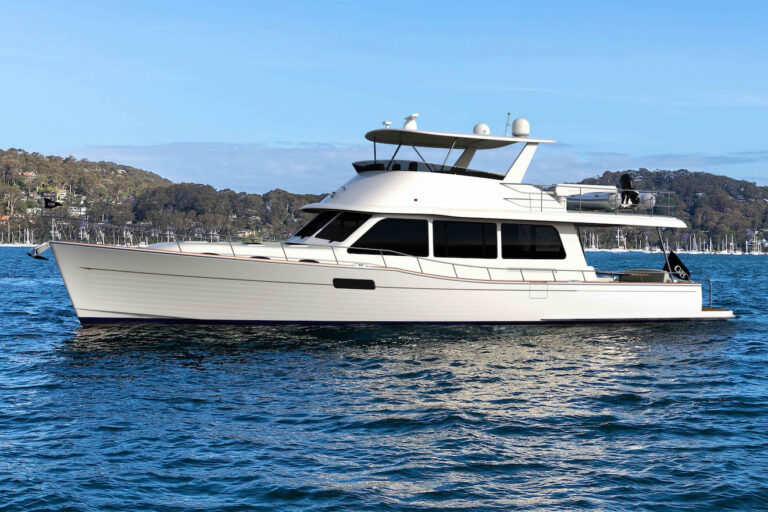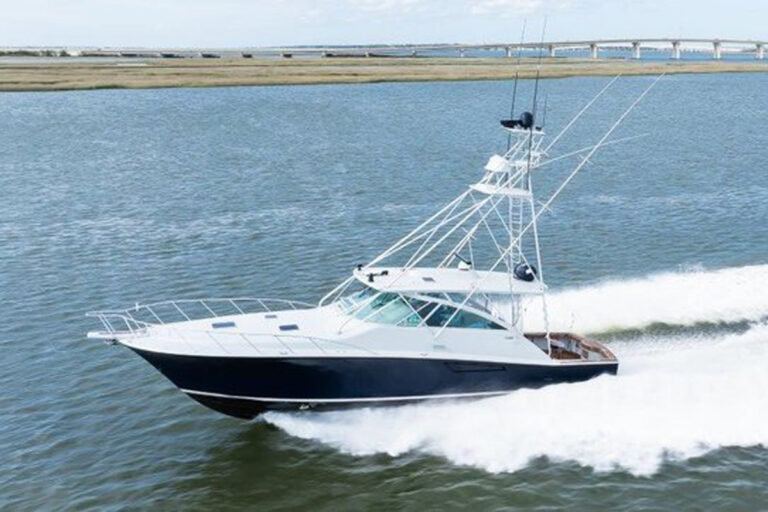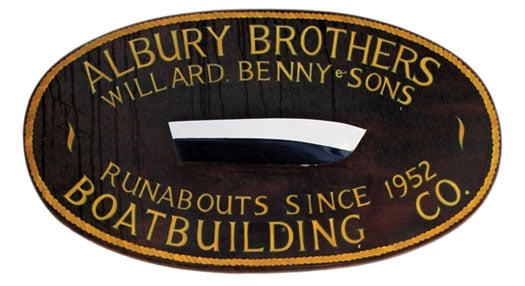
The Abacos
Willard Albury is the sort of boatbuilder that you don’t come across much anymore. He does not think of boats in terms of units or direct his company from a mahogany desk; passionate about his work, he puts in his hours on the shop floor. But don’t think of him as cooped up, for Albury Brothers Boatbuilding’s “plant” is on the water-in the Abacos, of all places. Its large work bays open onto a speck of earth in the sea that may very well be the most pleasant and beautiful place on the planet.
Alburys have been building boats in the Abacos (in the northern Bahamas) for more than 200 years-it was more or less a necessity for the family, loyalists who fled to the area following the American Revolution. When the first settlers arrived on Man-O-War Cay, farming turned out to be a poor option as the soil was too thin. To survive they learned to live from the sea; while some fished, almost all built boats. As a result of this legacy, the island’s inhabitants are superb watermen and craftsmen.
The first boats built on Man-O-War were used for fishing, hauling pineapples and wrecking-salvaging ships that had grounded on coral and sandbanks. During the early part of the century, the bulk of the island’s male population would set sail in sponge boats each season, working the Little Bahama Bank for six to eight weeks each year. After the sponges succumbed to hurricanes and disease, the focus shifted to crawfish.
As the scope of commerce in the region grew, so did the size of the vessels: The keel for the 130-foot schooner Abaco was laid in 1917. Wood was cut by hand in the forests near Marsh Harbour, and ferried to the island-men worked from “can to can’t” (sunup to sunset). During the Depression, merchants in Nassau supplied nails, paint and cotton caulking and Man-O-War’s craftsmen returned 10-foot dinghies that were sold for $25. As word of Man-O-War and its boatbuilders spread shortly after World War II, American yachtsmen began arriving at the island, and William Albury built his first yacht. The 30-foot auxiliary sloop was named Sweet-heart. (The owner’s wife was apparently unaware of the commission-how times have changed!) Other yachts followed. In an act of self-commemoration, in 1964 Albury launched the 60-foot William H. Albury, which participated in the Tall Ships event in New York in 1976.
Maurice Albury, Willard’s father, built the tender for the William H. Albury. Like most young men on Man-O-War in those days, Maurice began his career hand-sawing the Madeira and dogwood that was used for the construction of boats. By the 1920s Maurice was practicing his trade, building sponging boats for local fishermen. Willard was born in 1938 and joined the effort at a young age, helping out around the shop. “At that time we finished school at age 14; I went to work with my dad full time,” says Albury. They built sailing dinghies and small inboard powered skiffs-both designed for transporting goods and fishing in the waters of Eleuthera and the Exumas.
In 1960 an American brought the Alburys their first power tools. To show his appreciation, Maurice named one of Willard’s 17 siblings after the gentleman. Willard and his late brother Benny took charge of the shop at about the same time. “Like Dad, we designed our boats by eye and sea trial-if it looked right it usually worked,” said Albury. While they built a variety of boats from 18 to 22 feet, they had begun to focus on 16- and 18-foot skiffs designed for fishermen. “They liked our boats because they planed easily with an 18 hp outboard,” recalls Albury.
By the mid-1980s wood suitable for boat building was becoming scarce. However, reliable shipping services made the purchase of raw materials in the United States practical, and fiberglass seemed the logical choice. “My brother Edwin was the first to build a fiberglass boat on Man-O-War and the fishermen seemed to like them,” drawls Albury. “We had used fiberglass for repairs and Benny had visited boatbuilders in the U.S., so we decided to give it a try.” Willard and Benny launched their first fiberglass boat in 1984. The Albury Brothers 18.5 was stout and seaworthy and quickly became popular with the crawfishermen in Spanish Wells-maybe too popular. “After a while I believe they took one of our boats and began building them on their own,” Albury says. The 18.5-footer was a center console design, the sort that American boaters were developing a passion for.
While Edwin’s focus shifted to running Man-O-War’s boatyards (Edwin’s #1 and Edwin’s #2), Willard and Benny found an expanding market for their products. “Americans rented our boats and seemed to like them,” says Albury. The 18.5 grew to 20 feet and, in 1997, a 23-footer was introduced. With an output of just 10 boats a year, the brothers are never short of work. “Americans would place an order at the end of one season and pick the boat up at the beginning of the next,” says Albury, who still has a waiting list to get on the waiting list. He has built hundreds of boats; nowadays most are for pleasure.
When I visited his shop this summer Willard and his sons Don and Jamie were fairing the tooling for a new 27-footer. Like the 20- and 23-footers, she will have a fine entry, a slight keel and tightly rounded bilges topped by an integral chine ledge that adds reserve buoyancy aft and controls spray forward. She will have 18 degrees deadrise at the transom and, like her sisters, will run efficiently with reasonable power. Her bottom will be solid fiberglass and her topsides and deck will be cored with Corecell foam. Fiberglass-encapsulated marine plywood has been used for decks in the past. Fuel and water tanks are built of aluminum, unless it is in short supply, in which case integral fiberglass tanks are installed. (All boats built for the U.S. market will have aluminum tanks.)
During my visit, a gaggle of American enthusiasts watched respectfully as Willard stood barefoot mixing catalyst and resin, wearing his trademark khaki shirt and long pants. Another small group of admirers ran their hands down the side of a brand-new 23 ready for launch. I asked Willard why he thought so many people are so passionate about his boats. “Everybody says they know for sure they’re going to last,” he offered humbly.
In my view there’s more to it than that. It’s the feather-soft ride that must be experienced to be appreciated; it’s a purposeful look that seems long lost to American production design. Most important, it is the pedigree. You will never meet kinder, more pleasant people than Man-O-Warians, and few, if any, who are more capable with their hands.
Wander by the Albury shop in the evening and chances are you will see Willard working on one of his boats. “Most of the men leave at five, but I have always put in a full day,” he explains. When he does have a bit of spare time he likes to go boating. As he hasn’t found the time to build a new boat for himself, he enjoys poking about in his rare 14-foot Woodson, or taking an evening cruise on his 1968 Bertram 25. Most of the time Willard is either thinking about boats or building them-and that’s what makes them such a part of life on the paradise that is Man-O-War Cay.

